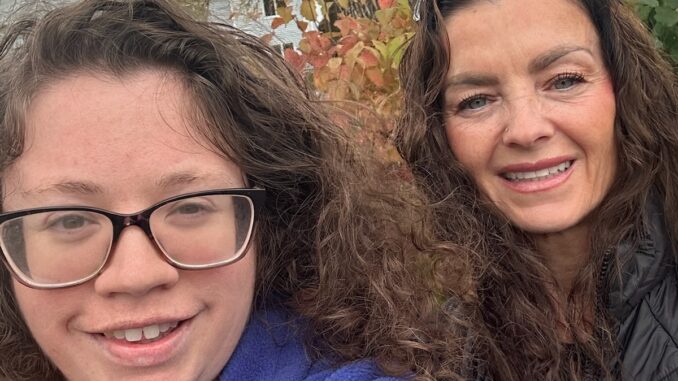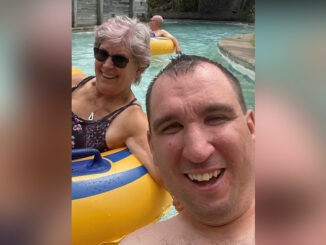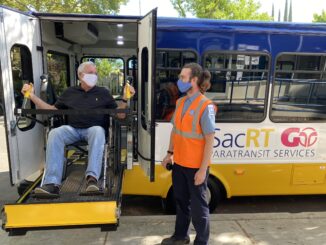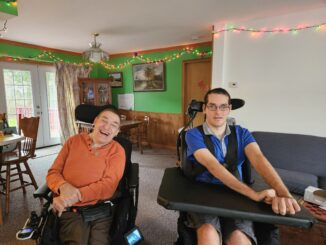
Woman with cerebral palsy uses assistive technology to accomplish otherwise challenging daily tasks
by Jacob Peterson
Briana Phibbs has spent her life defying expectations, and the New York State Council on Developmental Disabilities (CDD) is helping her do it again by aiding her in living independently through assistive and enabling technology.
The 28-year-old Phibbs was born with cerebral palsy, affecting the right side of her body and limiting her range of movement. Phibb’s aunt, Christine Erman, has helped watch after Phibbs all her life, and says Phibbs was told as a child she would be unlikely to graduate high school. Phibbs proved the doctor wrong.
“She has a four-year college degree that she got in three years,” Erman says. “It was so very hard for her, but she did it.”
“She’s really loved and everybody wants to help her, but she really wanted to help herself.”
Christine Erman, Aunt of Briana Phibbs
The choice for Phibbs to seek further independence came when she found out she was going to have a child two years ago. She’d already moved into her own apartment at the time and didn’t want other people doing everything for her.
“When I found out about my son I was like, ‘Okay, I’m doing this for myself and for him,’” she recalls.
Phibbs determination for more independence led to her being selected to participate in a pilot project called the Enabling Technology and Housing Initiative. This three-year project funded by the New York State Council on Developmental Disabilities (NYS CDD) connects people with disabilities to technologies that helps their autonomy.
Through this project, Phibbs was introduced to the nonprofit Southern Adirondack Independent Living (SILO), who in turn helped her by providing enabling technology to make her goal of independence a reality.
“They helped her find equipment that changed her life forever,” Erman says. “She’s really loved and everybody wants to help her, but she really wanted to help herself.”
Erman says the technology allows Phibbs to do daily tasks by herself, like vacuuming that, without assistive technology, she would need help with. Due to the limited mobility on her right side, tasks like grooming her own hair or chopping vegetables can be challenging. Through this project, Brianna was able to identify and obtain enabling technology which allows her to do these tasks one-handed.
“It’s given her so much self-confidence,” Erman says. “That’s the best thing that she got out of the experience.”
Phibbs plans to continue to expand on this independence, having plans to learn how to drive with the use of assistive technology. In addition to this, she also wants to become an advocate for the program, feeling it has greatly improved her quality of life.
“She wants to become an advocate to show many other disabled people [sic] that this is amazing if you have the right tools,” Erman says, “She wants to make that a job now and be helpful to others and give back.”
The availability of this assistive technology has been life changing for Phibbs, someone who had been told “no” and “you can’t” for her entire life.
“We took those words out of our vocabulary at home,” Erman said. “She wants to show that you don’t have to say ‘no,’ you don’t have to take ‘no.’”
For more information about the New York State Council on Developmental Disabilities, go to https://cdd.ny.gov/. This program is supported by funding from the U.S. Department of Health and Human Services Administration for Community Living.



